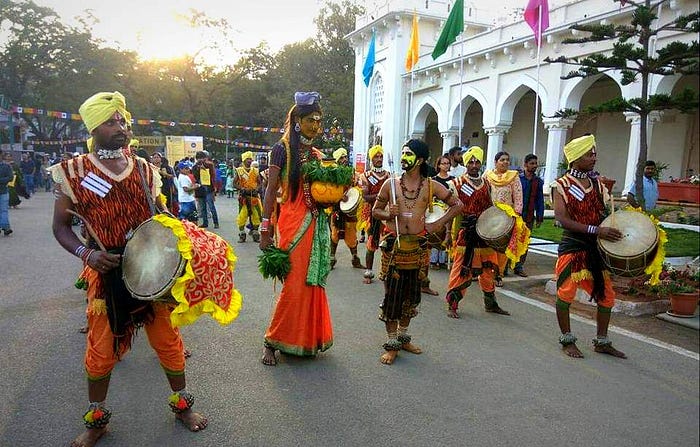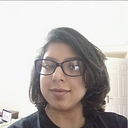Oggu Katha: An art of Indian Storytelling

Have you ever wondered why villagers are so conversant with mythological stories and long-forgotten folk tales? For them, entertainment means listening to storytellers who don’t simply narrate folk or mythological tales but perform them keeping the audience glued for hours. The latter takes back home memories lasting a lifetime to be passed on to the next generation. Oggudolu or Oggu Katha, still unknown to many in the city, is gradually becoming popular due to the efforts of the Telangana government’s cultural and tourism department. For an outsider like me who was not born in this State, Oggudolu left me mesmerized. My first brush with this performing art form was at Hyderabad Literary Festival.
The memory of the spectacular live Oggu Katha performance remains fresh in my memory even after two years. How could one forget the amazing acrobatic skills of the performing artists and the way they perfectly balanced each other while building the human pyramids with dexterity within minutes? Till then, like many, I was not aware of Oggudolu or Oggu Katha and the fact that it originates from Warangal and few other districts of Telangana.
This folk performance naturally piqued my curiosity. A little bit of research yielded to a series of videos on the internet and a brilliant book titled ‘Orugallu to Warangal: Journeys Across Time’ authored by heritage enthusiasts and photographers Sadhana Ramchander and Lakshmi Prabhala. This book gives an in-depth insight into this traditional folk-art form.

Delving Further
Oggudolu is the handheld drum that produces the rhythmic beat which synchronizes with ankle bells. This art of visual storytelling is usually performed by members of the Golla or shepherd community. Nearly 15–40 performers with painted faces and vibrant costumes dance to the beats of the Oggudolu. They perform their brilliant acrobatic skills while narrating stories from mythology. The stories told are Mallanna Katha that revolves around Mallikarjun Swamy, an incarnation of Lord Shiva. Yellamma Katha is the patron deity of the South Indian states. She is also referred to as the “Mother of the Universe’ by her devotees and Beerappa Katha or the tales of Veerabhadra Swamy.

Performance in Action
It is wonderful to see the Oggu Katha performers getting ready and applying makeup, holding up their little mirrors. For the performers who have been associated with this art since childhood, art has become a way of life. They move together as a family and their strong bond finds blatant reflection in their impeccable performance.
The performers enter the stage in a single file and then start moving in a circle while beating the drums slowly and gradually increasing the pace. Their ankle bells move in rhythm to the drumbeats. They wear an orange leopard printed vest with a dhoti and a turban and necklaces with cowries and beads on their neck and arms. Many paint their faces. One of the performers is dressed like Mallikarjuna Swamy with a tilak on his temple and a head full of matted locks. With his powerful oratory voice, he visually recreates the folk tale for the viewers.
Another electrifying moment from the performance that still lives on is that of a man donned in a sari. He sports long hair and deftly balances a pot full of neem leaves on his head, much like the Bonalu performers. On his waist he wears a wreath of neem leaves. In some cases, a diya is lit on the pot, which he balances while he lies down. This seamless act is much like that of a Kuchipudi dancer. He resembles Goddess Kali with his tongue out and eyes showing rage while he touches his feet to his chin. Costumes play a vital part in adding the dramatic element as much does the energetic style of storytelling.
When the central characters complete their performance, the others playing the decorated Oggudolu take turns to create human pyramids. The last and most complicated pyramid is a moment to remember. The performer on the top waves the Indian flag to reflect the pride they have for the nation and its diversity. It adds a patriotic fervor to the performance.
The interesting part here is no Oggu Katha performance is ever the same. There is always an element of surprise.
Never miss a chance if there is Oggudolu performance happening in your city. Folk performance such as this helps to build strong community bonds. It also makes us realize that there is still much left to explore in the remote corners of this vast country.
Care to read more about the colorful, multidimensional lineage of art and artistry in India? Find them here.
Trivia
Chowdarapally Ravi Kumar popularly known as Oggu Ravi is one of the leading practitioners of Oggu Dolu Vinyasam or Oggu Katha.
This article was published in the online edition of the e-magazine -The Pottluck, here is the link-
